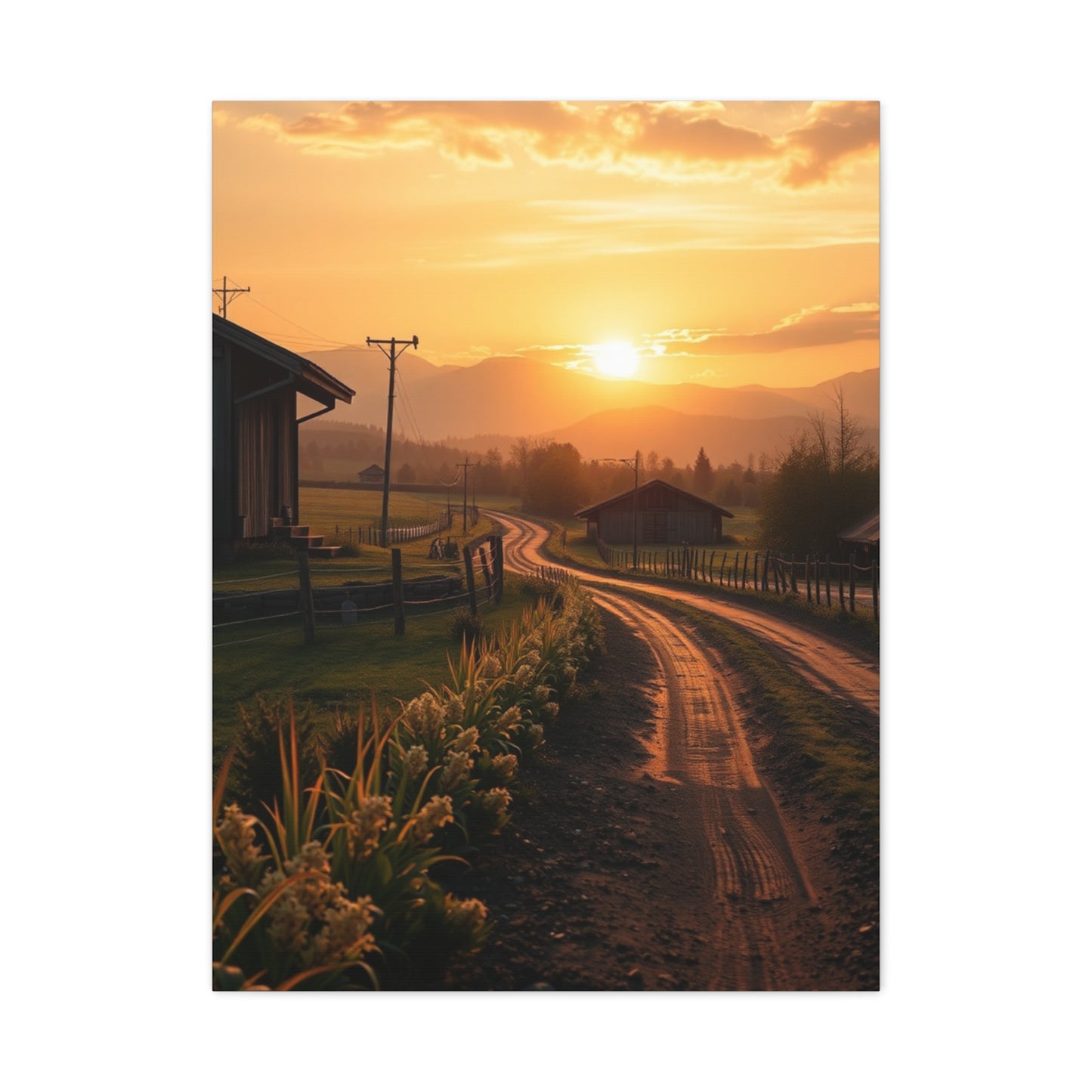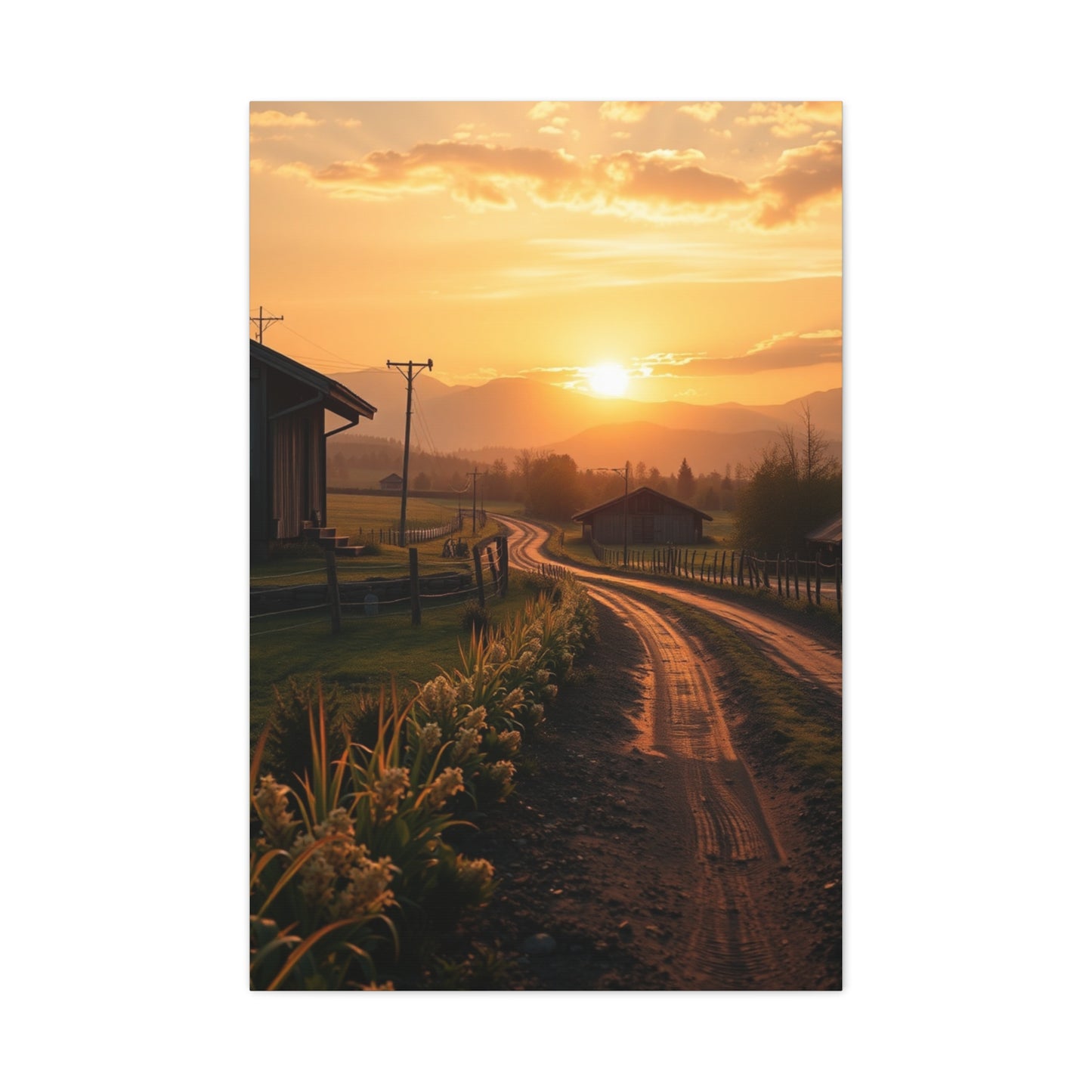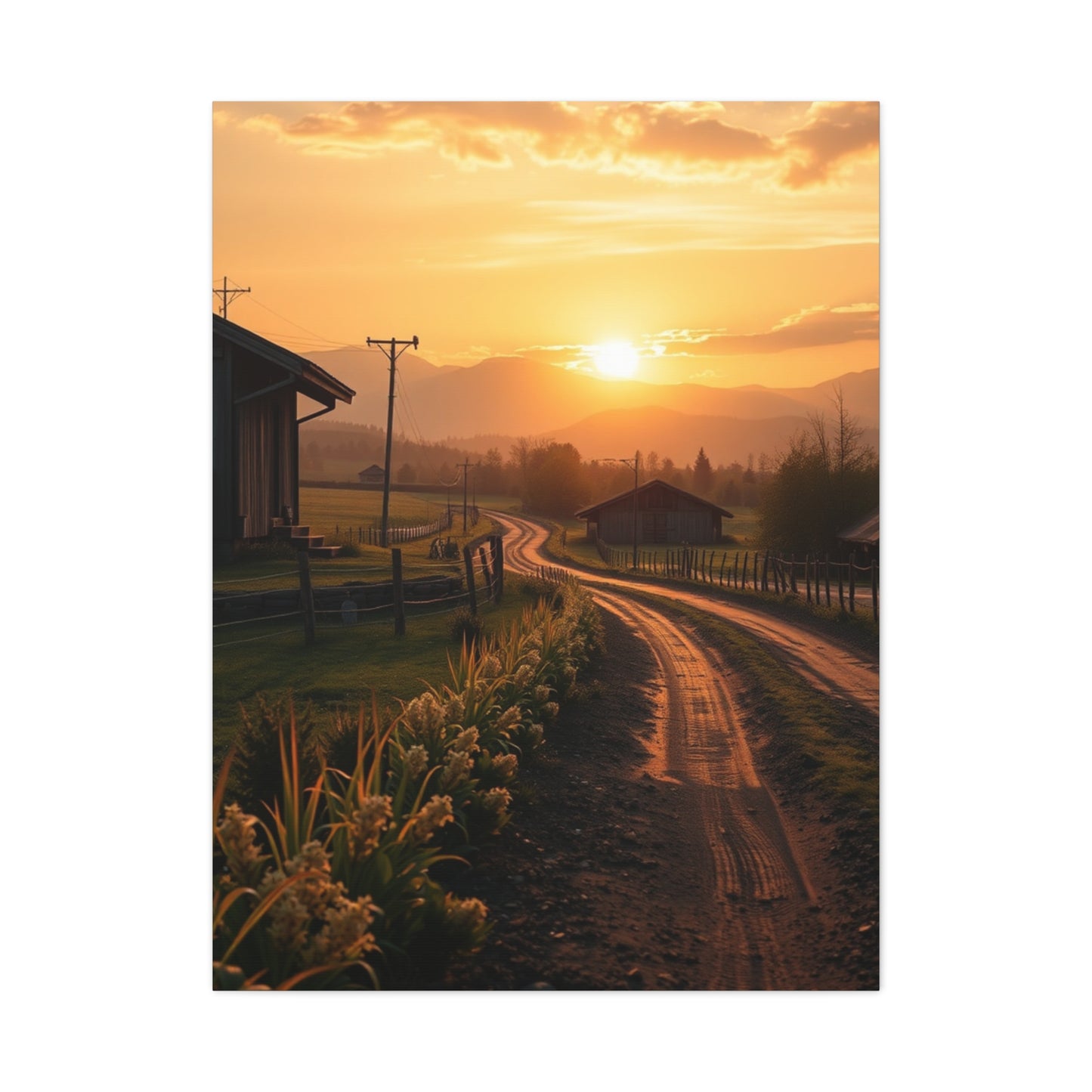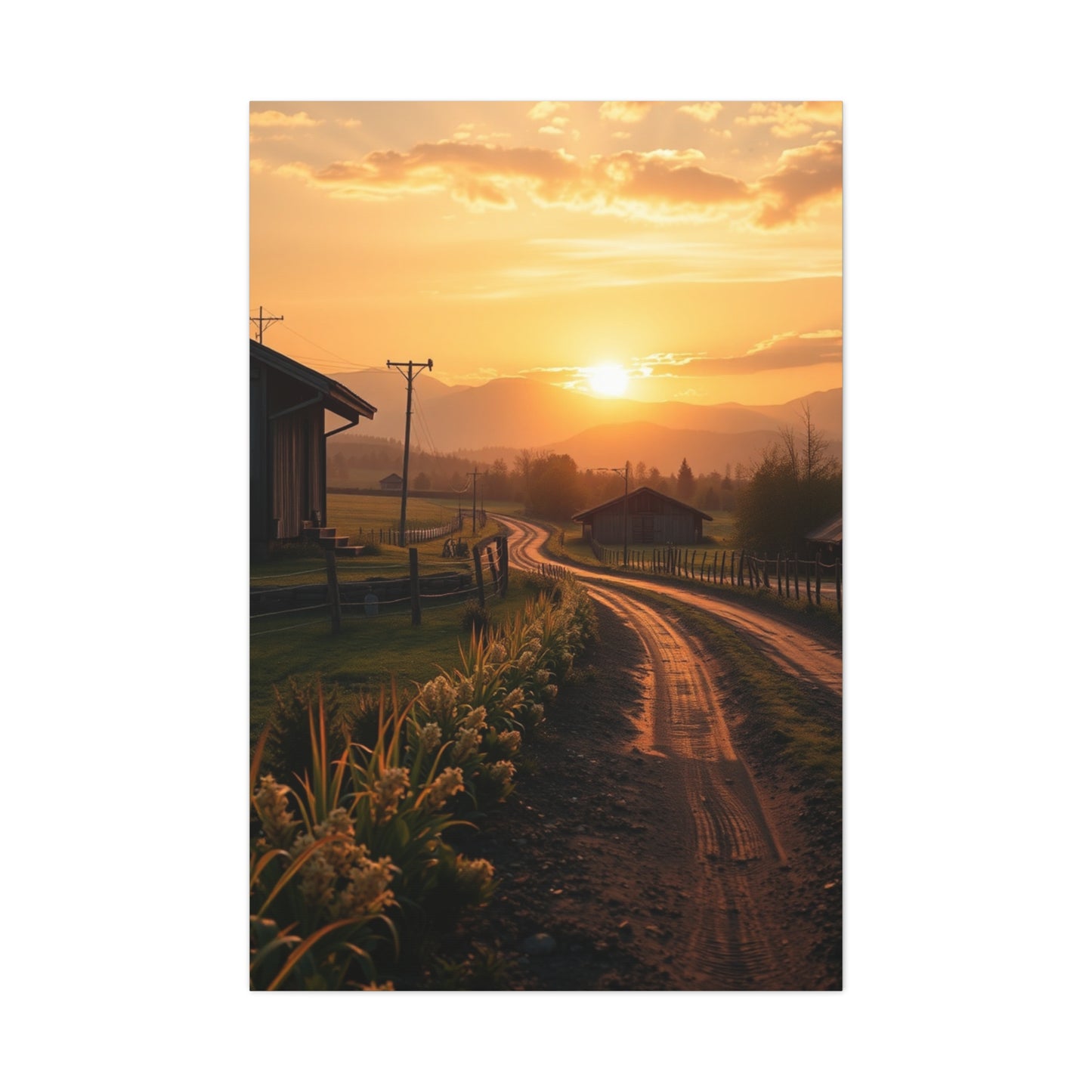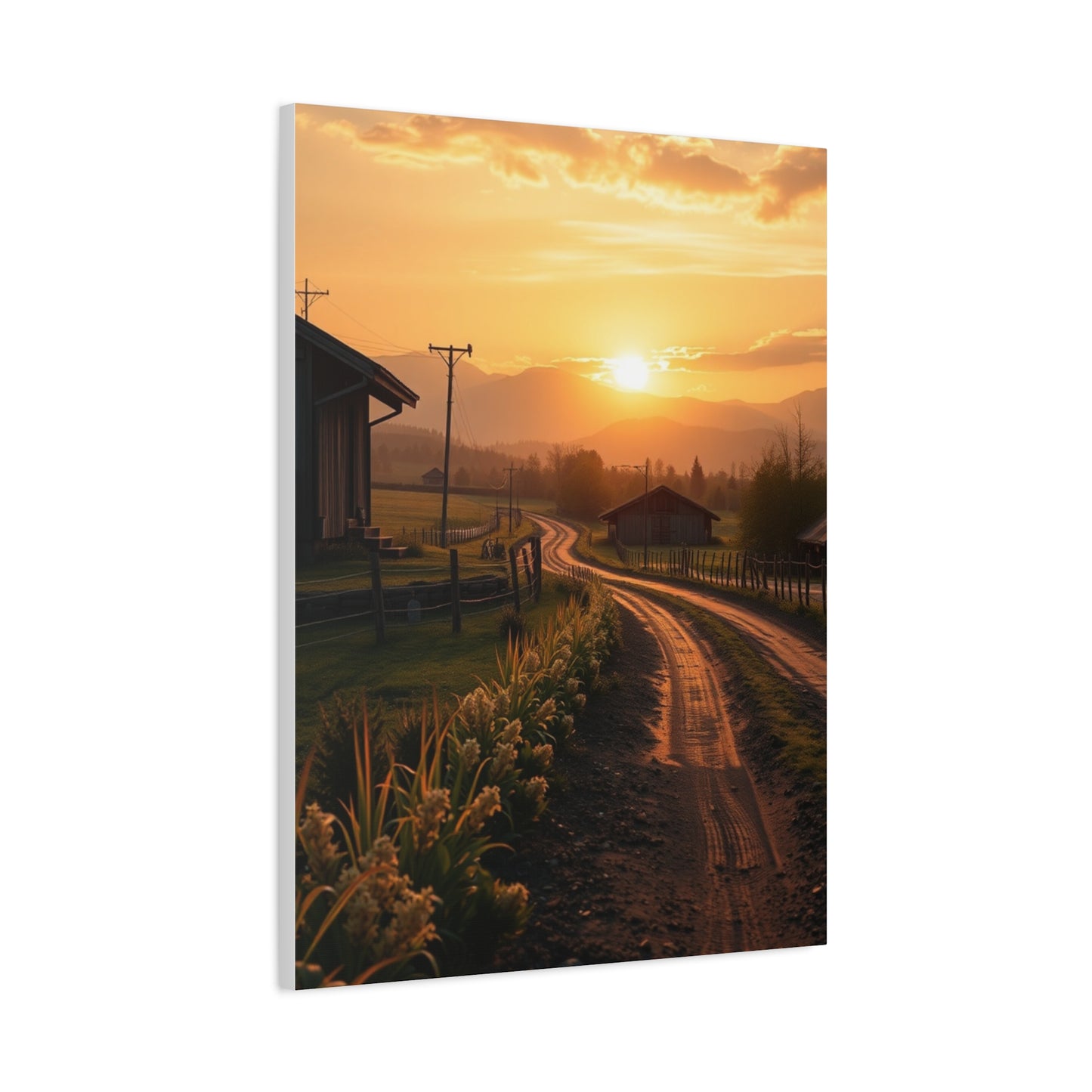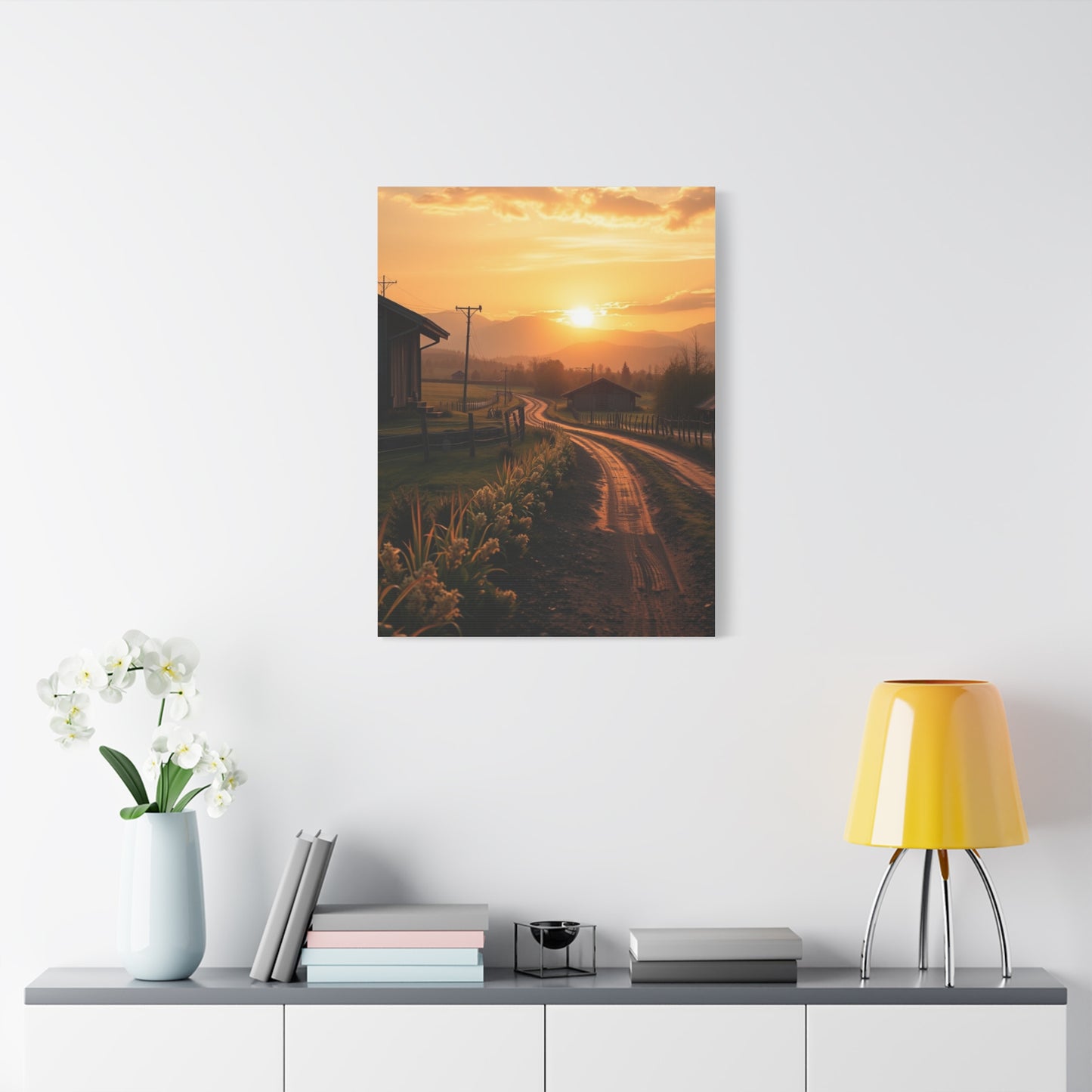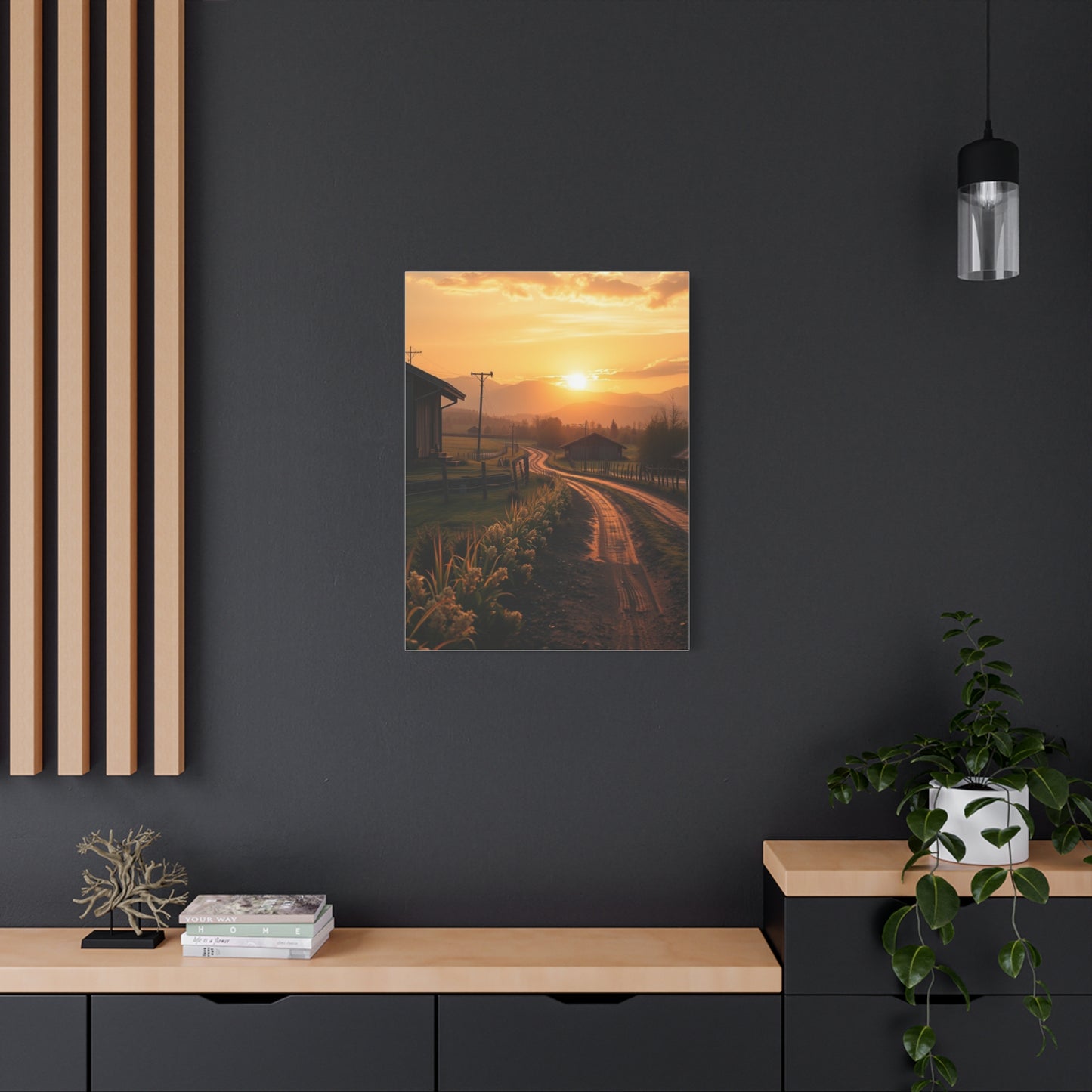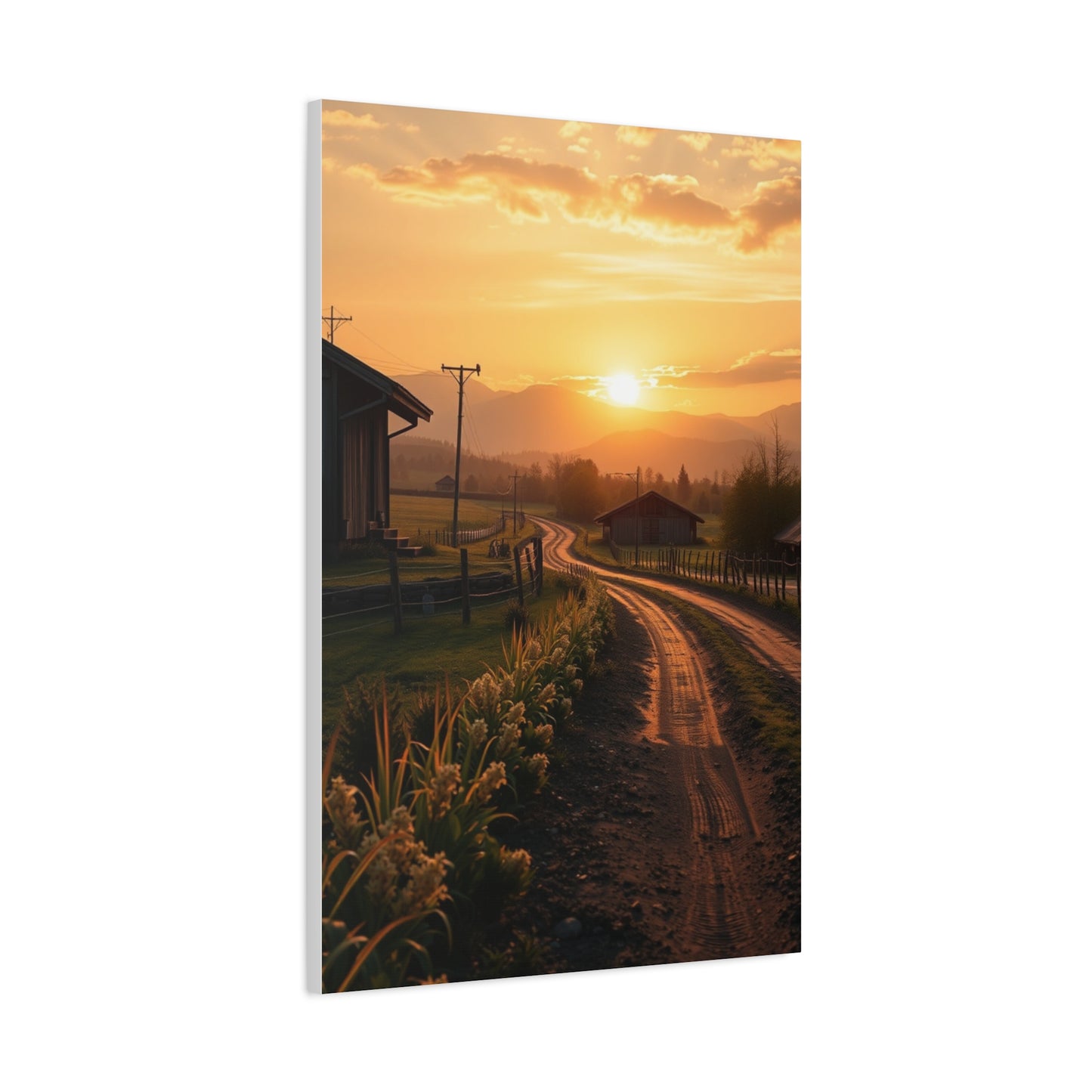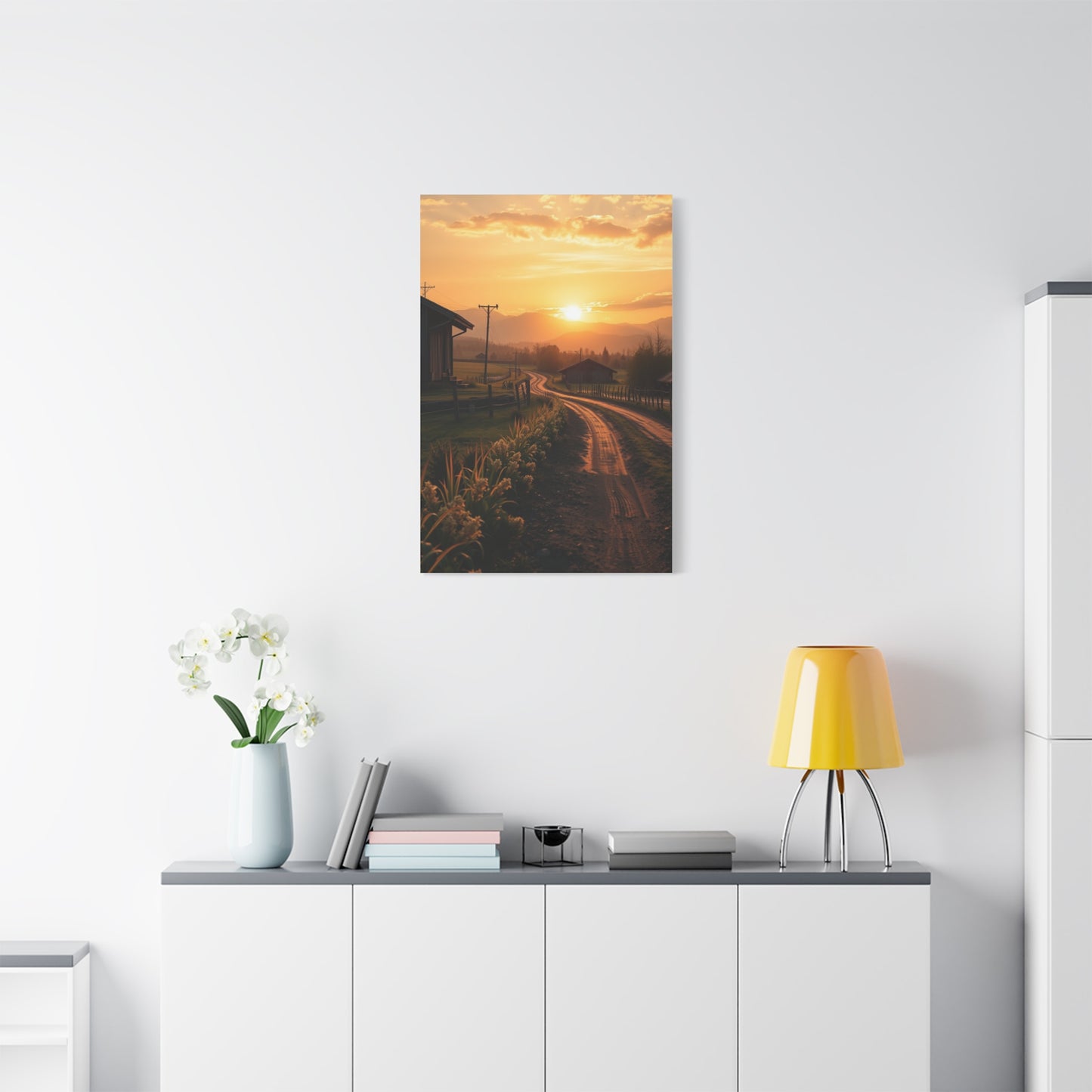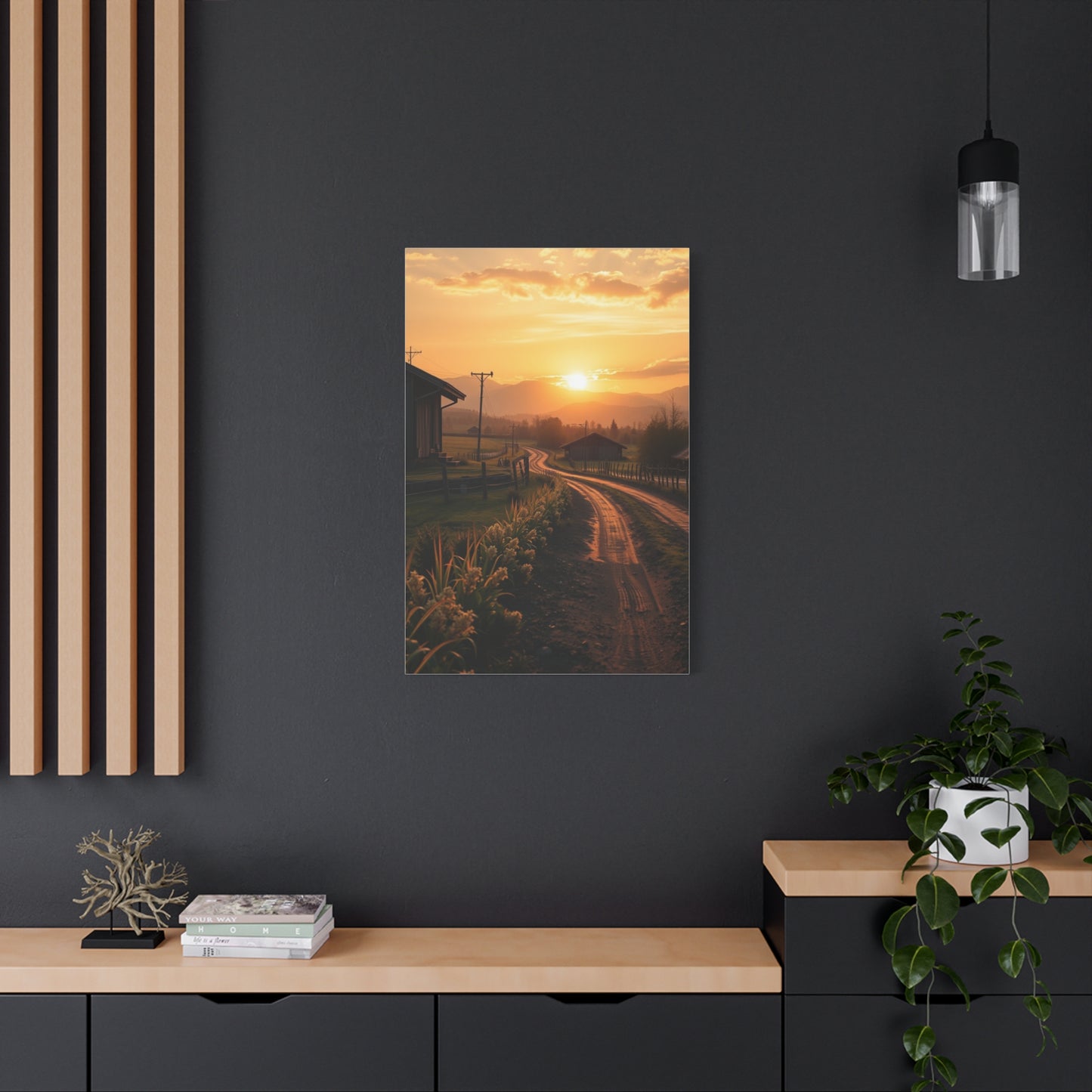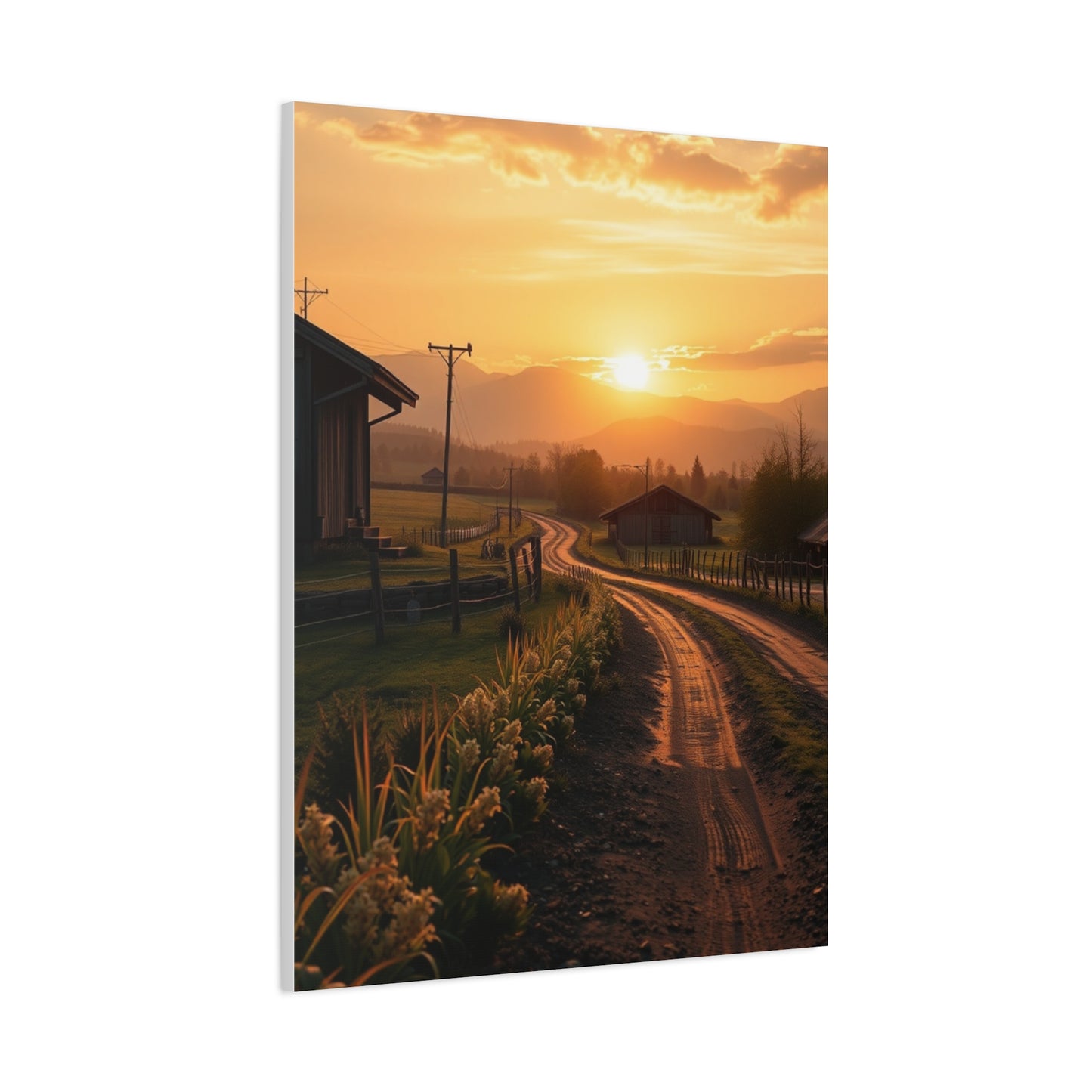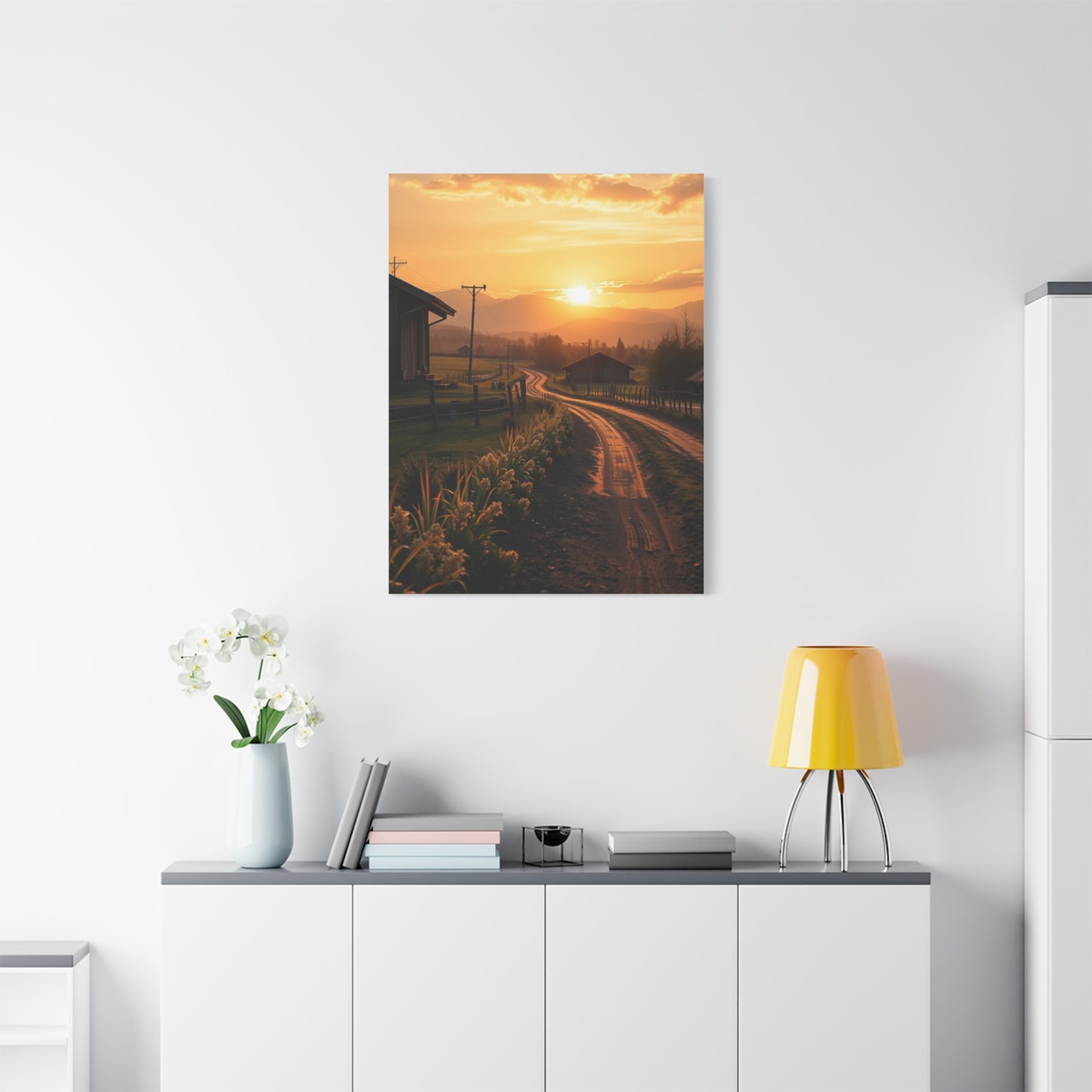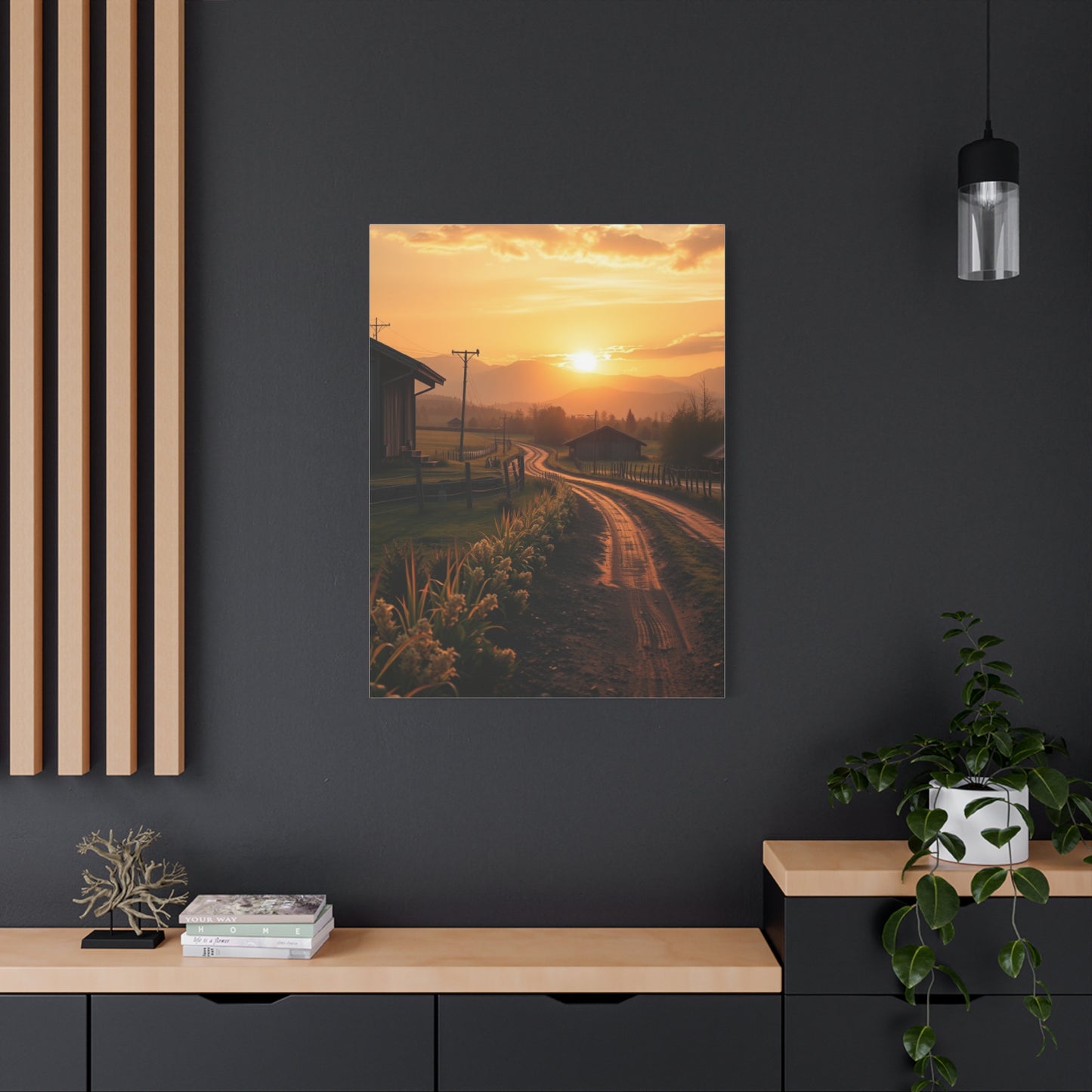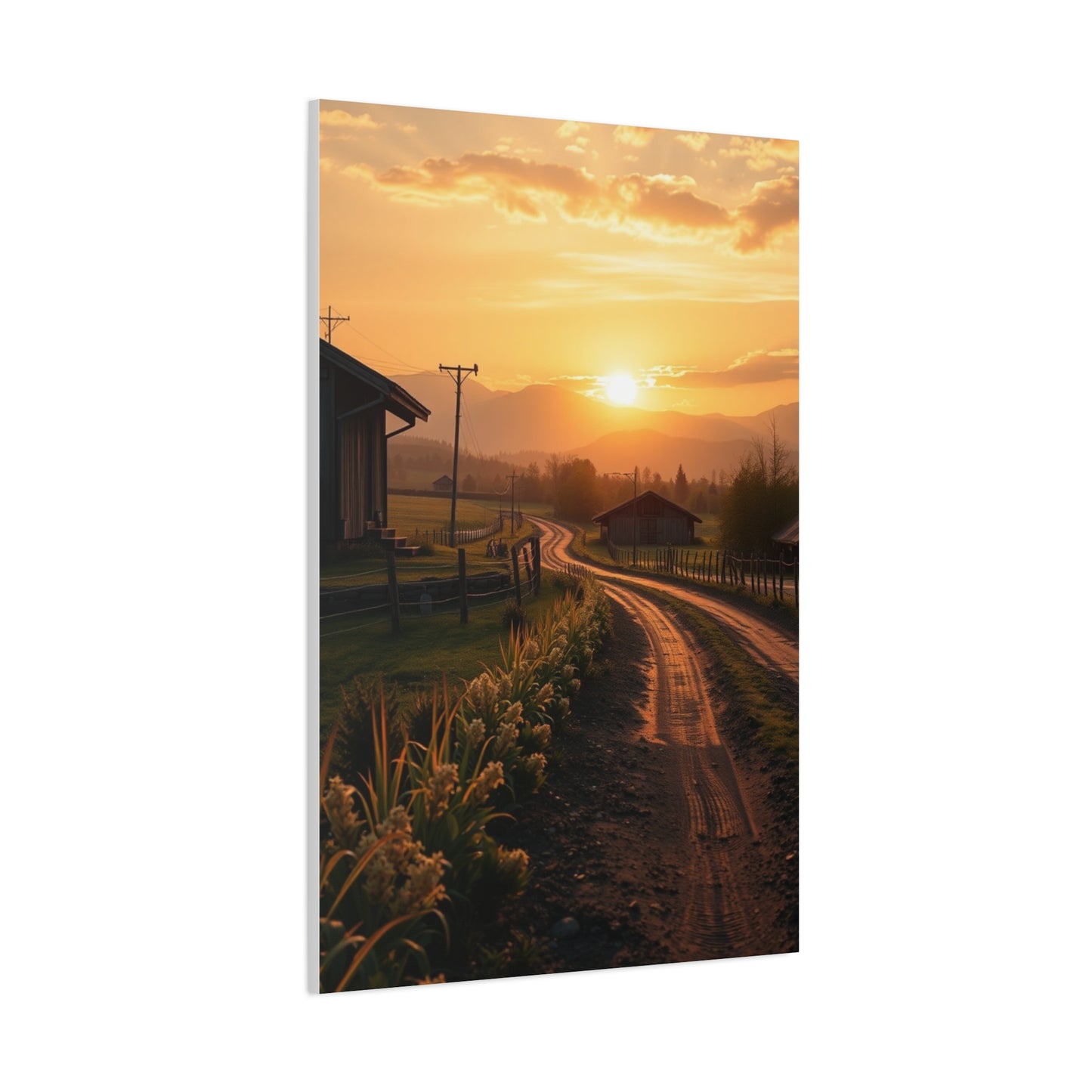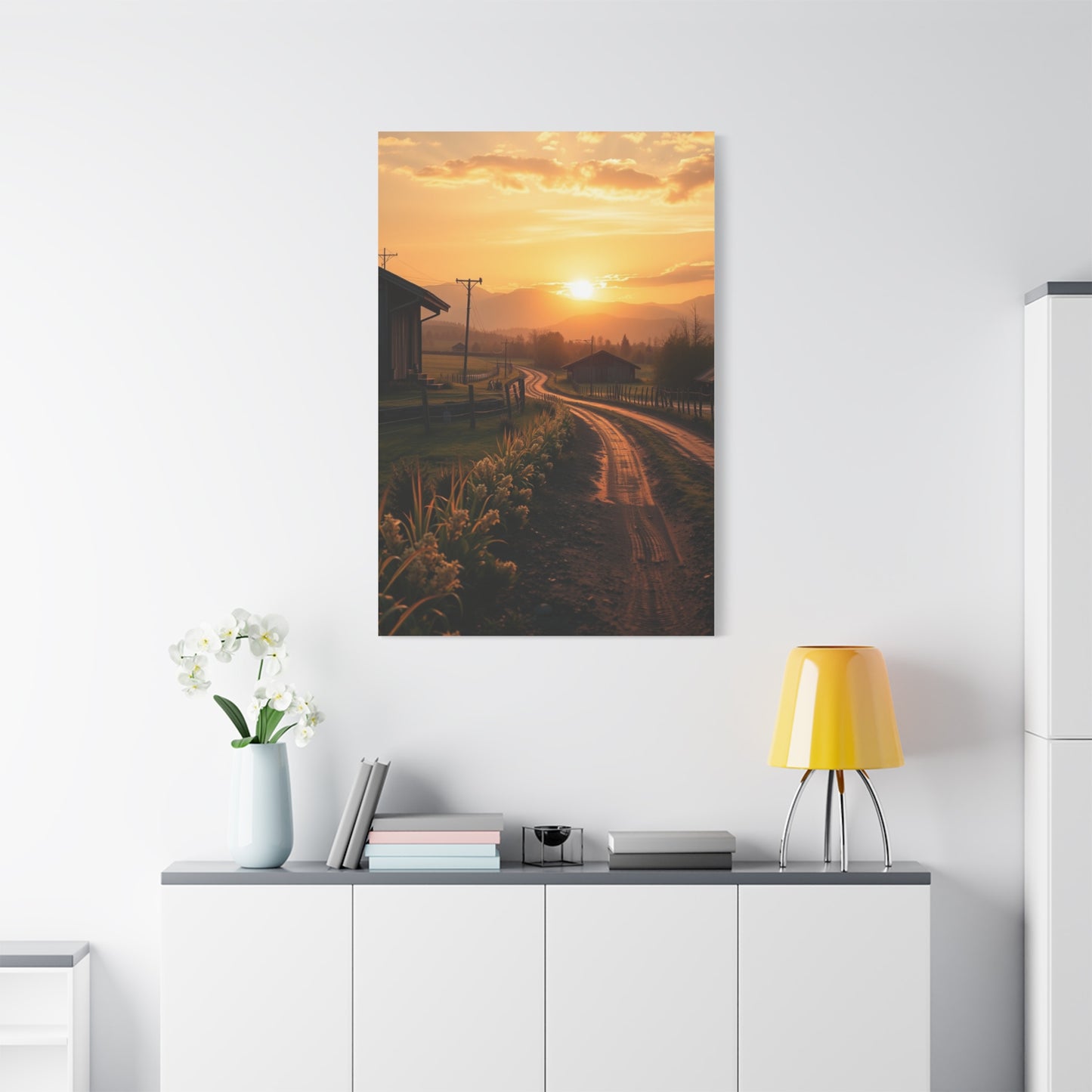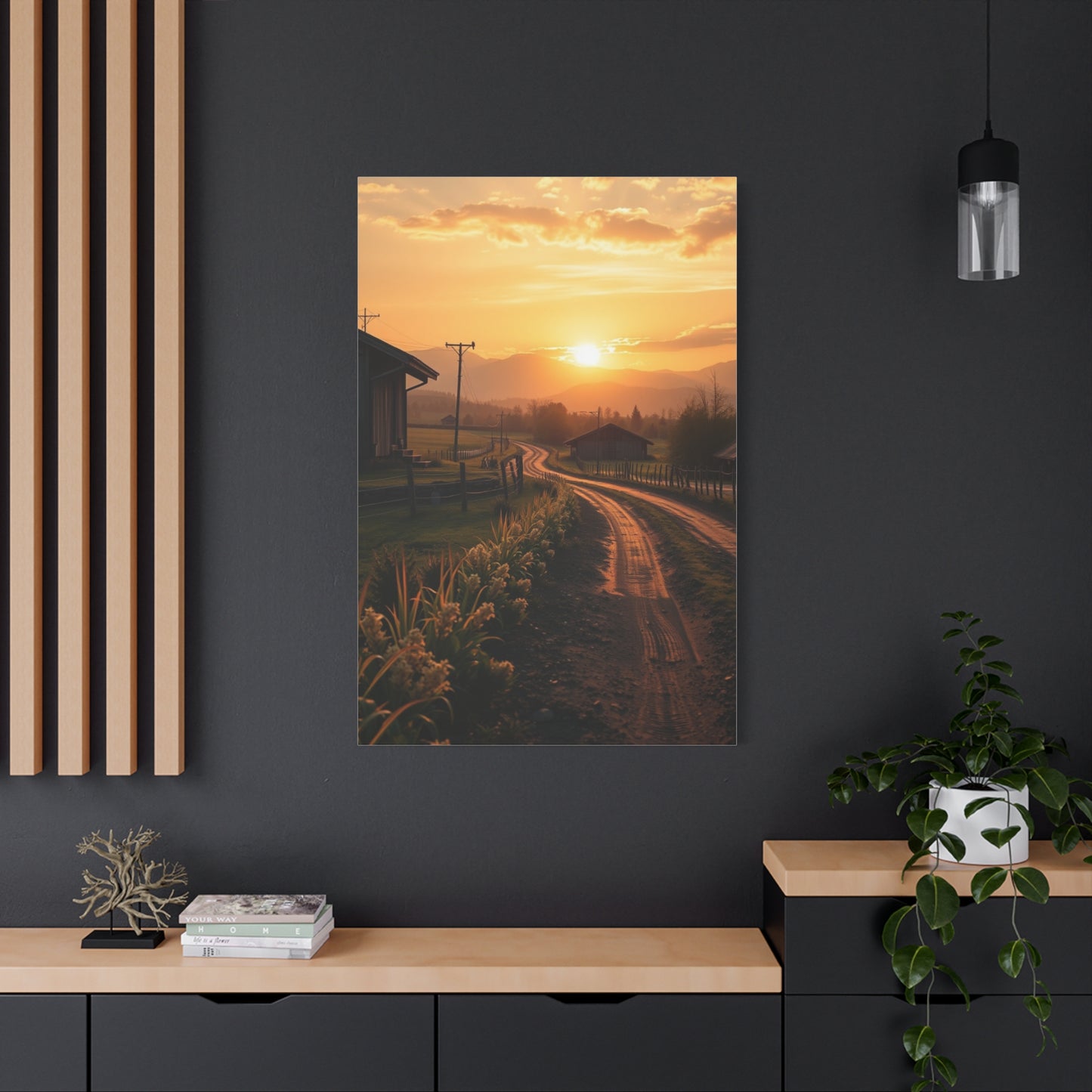Serene Countryside Canvas Art: Discovering the Beauty of Tranquil Pastures in Your Home
Canvas wall art featuring tranquil pastures brings the serene beauty of countryside landscapes directly into your living environment, creating an atmosphere of peace and natural harmony that transforms any room into a sanctuary of calm. These magnificent artistic pieces capture the essence of rolling hills, peaceful meadows, and pastoral scenes that evoke feelings of tranquility and connection with nature, making them perfect additions to modern homes seeking to incorporate elements of natural beauty and countryside charm.
The appeal of tranquil pastures canvas prints extends far beyond their visual beauty, offering homeowners an opportunity to create focal points that serve both aesthetic and emotional purposes. These carefully crafted artworks showcase the timeless appeal of rural landscapes, featuring gentle rolling hills dotted with grazing livestock, meandering streams, weathered barns, and expansive skies that seem to stretch endlessly toward the horizon. Each canvas print tells a story of simpler times and peaceful moments, inviting viewers to pause and appreciate the quiet beauty of pastoral life.
Modern manufacturing techniques have revolutionized the way these pastoral scenes are reproduced, allowing artists and photographers to capture every nuance of light, shadow, and color that makes countryside landscapes so captivating. High-resolution printing technologies ensure that every blade of grass, every cloud formation, and every subtle variation in tone is preserved with remarkable clarity and detail, creating canvas prints that rival the beauty of original paintings while remaining accessible to a broader range of art enthusiasts.
The therapeutic benefits of incorporating tranquil pastures canvas wall art into your living environment cannot be overstated. Research has consistently shown that exposure to natural imagery, particularly peaceful landscapes, can significantly reduce stress levels, lower blood pressure, and improve overall mental well-being. When you display these serene countryside scenes in your home, you create visual anchors that provide moments of calm respite from the demands and pressures of daily life, allowing you to reconnect with the peaceful rhythms of nature even when you cannot physically escape to the countryside.
These canvas prints also serve as powerful conversation starters, inviting guests to share their own memories and experiences of rural settings, family farms, or countryside adventures. The universal appeal of pastoral scenes transcends cultural and generational boundaries, making them excellent choices for homes where multiple family members or frequent visitors may have varying artistic preferences. Whether displayed in living rooms, bedrooms, dining areas, or even office environments, tranquil pastures canvas wall art creates an atmosphere of welcome and warmth that puts people at ease.
The versatility of these artistic pieces extends to their compatibility with various decorating styles and color schemes. Unlike more specific or contemporary art forms that may clash with certain furnishing choices, pastoral landscapes possess a timeless quality that complements everything from traditional farmhouse decor to modern minimalist aesthetics. The natural color palettes typically found in these scenes, featuring various shades of green, brown, blue, and cream, serve as neutral foundations that enhance rather than compete with existing decorative elements.
Selecting the perfect tranquil pastures canvas wall art requires consideration of several important factors, including the size and layout of the intended display area, the existing color scheme and decorating style, the specific mood or atmosphere you wish to create, and the viewing angles from which the artwork will be appreciated. Larger canvases work exceptionally well as statement pieces in spacious rooms, while smaller prints can be grouped together to create compelling gallery walls that tell cohesive visual stories about countryside life and natural beauty.
The quality of canvas materials and printing processes plays a crucial role in determining the longevity and visual impact of your pastoral artwork. Premium canvas materials provide superior texture and durability, ensuring that your investment will maintain its beauty and structural integrity for many years to come. Professional-grade inks resist fading and color shifting, preserving the vibrant greens of meadowlands, the golden hues of sunset skies, and the subtle earth tones of rural buildings exactly as the artist intended them to appear.
Proper framing and mounting techniques further enhance the presentation and protection of your tranquil pastures canvas prints. Gallery-style stretching ensures that the canvas surface remains taut and smooth, preventing sagging or warping that could detract from the artwork's visual appeal. Quality wooden frames not only provide structural support but also contribute to the overall aesthetic presentation, with options ranging from rustic barn wood finishes that complement the countryside theme to sleek contemporary frames that create striking contrasts with the pastoral imagery.
Lighting considerations play an essential role in maximizing the visual impact of your canvas wall art. Natural lighting from windows can beautifully illuminate pastoral scenes during daytime hours, creating dynamic displays that change subtly throughout the day as shadows shift and colors warm or cool with the changing angle of sunlight. Artificial lighting systems, including track lighting, picture lights, or strategically placed lamps, can highlight specific details within the artwork while creating dramatic effects that enhance the overall ambiance of the room.
The psychological benefits of surrounding yourself with images of tranquil pastures extend beyond immediate stress reduction to include improved creativity, enhanced focus, and greater emotional stability. Many homeowners report that they feel more grounded and centered when they can regularly view peaceful countryside scenes, as these images serve as visual reminders of life's simpler pleasures and the enduring beauty of the natural world. This connection to nature through art becomes particularly valuable for urban dwellers who may have limited opportunities to experience rural environments firsthand.
Historical Significance of Pastoral Art in Home Decoration
Pastoral art has occupied a cherished position in human culture for thousands of years, with evidence of countryside scenes appearing in ancient civilizations across the globe, from Roman frescoes depicting idyllic rural life to Chinese scroll paintings celebrating the harmony between humans and nature. This enduring fascination with rural imagery reflects a deep-seated human desire to maintain connections with agrarian roots and natural environments, even as societies have become increasingly urbanized and technologically focused.
The tradition of pastoral art gained particular prominence during the Renaissance period, when wealthy European families began commissioning paintings that idealized country life and celebrated the beauty of agricultural landscapes. These early works established many of the visual conventions that continue to influence contemporary tranquil pastures canvas wall art, including the emphasis on rolling hills, peaceful waterways, grazing animals, and rustic farm buildings that evoke feelings of nostalgia and simplicity.
During the 18th and 19th centuries, pastoral themes became increasingly popular among middle-class families as industrialization transformed urban environments and created a longing for the perceived purity and tranquility of rural life. Artists like Thomas Gainsborough and John Constable elevated countryside scenes to new levels of sophistication and emotional depth, creating masterworks that captured both the physical beauty and spiritual significance of pastoral settings. Their influence continues to shape contemporary approaches to rural landscape art, inspiring modern artists and photographers to seek similar combinations of technical excellence and emotional resonance.
The Victorian era marked a significant expansion in the accessibility of pastoral artwork, as advances in printing technology made it possible to produce high-quality reproductions that could be afforded by broader segments of society. This democratization of art coincided with the growth of suburban communities, where families sought to create homes that reflected both modern conveniences and traditional values associated with rural life. Tranquil pastures imagery became a popular choice for parlors, dining rooms, and bedrooms, where these peaceful scenes could provide daily reminders of natural beauty and simpler times.
The 20th century brought new artistic movements and techniques to pastoral art, with impressionist and post-impressionist influences introducing more experimental approaches to color, light, and composition. Artists began exploring ways to capture not just the visual appearance of countryside scenes but also their emotional and spiritual qualities, resulting in works that emphasized mood and atmosphere over photographic realism. These developments laid the groundwork for contemporary tranquil pastures canvas wall art that combines traditional subject matter with modern artistic sensibilities.
American pastoral art developed its own distinct characteristics during the colonial period and early years of independence, reflecting the unique landscape features and agricultural practices of the New World. Artists like George Inness and Albert Bierstadt created sweeping vistas of American farmland and wilderness areas that celebrated the nation's natural abundance while expressing optimistic visions of harmonious relationships between human settlement and environmental preservation. Their legacy continues to influence contemporary American pastoral art, including canvas prints that showcase distinctly American countryside scenes.
The Arts and Crafts movement of the late 19th and early 20th centuries brought renewed attention to the importance of handcrafted objects and natural materials in home decoration, with pastoral themes playing a central role in this aesthetic philosophy. Proponents of the movement argued that surrounding oneself with images of natural beauty could counteract the dehumanizing effects of industrial society, a perspective that resonates strongly with contemporary interest in tranquil pastures canvas wall art as a means of creating more peaceful and harmonious living environments.
Modern psychological research has validated many of the intuitive beliefs that drove historical interest in pastoral art, demonstrating that exposure to natural imagery can indeed provide measurable benefits for mental health and well-being. These scientific findings have contributed to a renaissance of interest in countryside themes, with contemporary artists and homeowners rediscovering the timeless appeal of tranquil pastoral scenes as both decorative elements and therapeutic tools.
The digital age has revolutionized the creation and distribution of pastoral artwork, making it possible for photographers and digital artists to capture and manipulate countryside images with unprecedented precision and creativity. High-resolution cameras can record every subtle detail of pastoral scenes, while advanced editing software allows artists to enhance colors, adjust lighting, and create compositions that may not exist in nature but capture the emotional essence of peaceful rural environments.
Contemporary tranquil pastures canvas wall art draws inspiration from this rich historical tradition while incorporating modern technological capabilities and artistic innovations. Artists today have access to a global palette of pastoral imagery, from the lavender fields of Provence to the sheep-dotted hills of New Zealand, allowing them to create works that speak to universal desires for peace, beauty, and connection with nature while reflecting the diverse landscape traditions of cultures around the world.
Psychological Benefits of Natural Landscape Imagery
The human brain has evolved over millions of years in natural environments, creating deep-seated neural pathways that respond positively to images of landscapes, plants, and other elements of the natural world. When we view tranquil pastures canvas wall art, these ancient patterns of recognition and appreciation are activated, triggering physiological and psychological responses that promote relaxation, reduce stress hormones, and enhance overall well-being. This biological predisposition, known as biophilia, helps explain why pastoral imagery has such universal and enduring appeal across different cultures and time periods.
Scientific studies have documented significant reductions in cortisol levels, blood pressure, and heart rate among individuals exposed to natural landscape imagery, with pastoral scenes proving particularly effective at inducing states of calm and relaxation. The gentle curves of rolling hills, the soft textures of grass and foliage, and the harmonious color combinations typically found in countryside scenes all contribute to creating visual environments that the brain interprets as safe, peaceful, and restorative. These physiological changes translate into improved mood, enhanced cognitive function, and greater emotional stability.
The concept of attention restoration theory provides additional insight into the psychological benefits of tranquil pastures canvas wall art. According to this framework, modern life places excessive demands on our directed attention systems, leading to mental fatigue, decreased concentration, and increased susceptibility to stress and anxiety. Natural imagery, particularly peaceful landscape scenes, engages what researchers call "soft fascination," allowing our directed attention systems to rest and recover while our minds remain engaged with visually pleasing and emotionally satisfying stimuli.
Pastoral scenes excel at providing this type of restorative visual experience because they typically lack the harsh contrasts, sharp angles, and chaotic elements that characterize urban environments and can contribute to mental overstimulation. Instead, they feature gentle transitions between different elements, organic shapes that feel familiar and comfortable to the human eye, and color palettes that echo the natural rhythms of seasons and weather patterns. This visual harmony creates a sense of coherence and predictability that allows viewers to relax their vigilance and experience genuine mental refreshment.
The therapeutic applications of natural landscape imagery have been recognized in various healthcare settings, where tranquil pastures artwork is increasingly used to create more healing and supportive environments for patients, families, and healthcare workers. Hospitals, rehabilitation centers, and mental health facilities often incorporate pastoral canvas prints into waiting areas, patient rooms, and therapy environments, where these calming images can help reduce anxiety, improve patient satisfaction, and support the healing process.
Research has also demonstrated that exposure to natural imagery can enhance creativity and problem-solving abilities, as the relaxed mental state induced by viewing peaceful landscapes allows for more flexible and innovative thinking patterns. Many professionals working in demanding careers report that having tranquil pastures canvas wall art in their home offices or workspaces helps them approach challenges with greater clarity and find creative solutions to complex problems. The visual respite provided by these pastoral scenes creates mental breathing room that can be essential for maintaining peak cognitive performance.
The social benefits of displaying natural landscape artwork extend beyond individual psychological effects to include positive impacts on family dynamics and social interactions. Peaceful pastoral scenes create conversation focal points that tend to evoke positive memories and encourage sharing of personal experiences related to nature, travel, or childhood memories of rural environments. These shared moments of reflection and connection can strengthen relationships and create more harmonious household atmospheres.
Seasonal affective patterns can also be positively influenced by the strategic display of tranquil pastures canvas wall art, particularly during winter months when access to natural outdoor environments may be limited. Images of sun-drenched meadows, blooming wildflowers, or gentle streams can help maintain emotional connections to natural beauty and seasonal cycles even when weather conditions prevent regular outdoor activities. This visual connection to nature's rhythms can help regulate circadian patterns and maintain more stable moods throughout seasonal transitions.
The meditative qualities of pastoral imagery make tranquil pastures canvas wall art particularly valuable for creating dedicated relaxation environments within homes. Many homeowners establish quiet corners or meditation areas where they can sit comfortably while viewing peaceful countryside scenes, using these spaces for daily stress reduction, mindfulness practices, or simply taking brief mental breaks from the demands of busy schedules. The consistent availability of these visual sanctuaries can significantly improve overall quality of life and emotional resilience.
Children and adolescents may benefit particularly strongly from exposure to tranquil pastoral imagery, as their developing nervous systems are especially responsive to environmental influences. Bedrooms and study areas decorated with peaceful countryside scenes can promote better sleep patterns, improved concentration during homework activities, and healthier emotional development. The absence of overstimulating visual elements in pastoral artwork makes these pieces ideal for creating calm, supportive environments that encourage learning and growth.
Color Psychology in Pastoral Canvas Art
The color palettes characteristic of tranquil pastures canvas wall art possess inherent psychological properties that contribute significantly to their calming and restorative effects on viewers. Understanding these color relationships helps explain why pastoral imagery feels so inherently peaceful and provides valuable insights for selecting artwork that will create the desired emotional atmosphere in your living environment. The predominant greens found in meadows, trees, and rolling hills carry associations with growth, renewal, and natural harmony that tap into fundamental human responses to vegetation and fertile landscapes.
Green occupies a unique position in human color perception, representing the wavelength that requires the least energy for our eyes to process and interpret. This physiological efficiency translates into a natural sense of visual comfort when viewing green-dominated pastoral scenes, allowing the nervous system to relax while still remaining engaged with the imagery. Different shades of green within tranquil pastures artwork create layers of visual depth and interest while maintaining this underlying sense of ease and natural harmony.
The blues typically present in pastoral skies, water features, and distant mountain ranges contribute additional calming influences to countryside compositions. Blue wavelengths have been consistently associated with reduced heart rate, lower blood pressure, and decreased anxiety levels in psychological studies. When combined with the greens of pastoral landscapes, these blue elements create color harmonies that feel both visually pleasing and emotionally soothing, establishing atmospheric conditions that encourage relaxation and contemplation.
Earth tones including various browns, tans, and ochres found in farm buildings, soil, tree trunks, and pathways provide grounding elements that anchor pastoral compositions and create feelings of stability and security. These warm, muted colors echo the human relationship with shelter, agriculture, and settled life, contributing to the sense of peaceful domesticity that makes pastoral scenes so appealing as home decoration. The subtle variations in earth tones found in high-quality canvas prints add visual richness without creating the overstimulation that can result from more saturated or contrasting color schemes.
Seasonal variations in pastoral color palettes offer opportunities to select artwork that complements both personal preferences and specific decorating goals. Spring pastoral scenes featuring fresh greens, soft yellows, and delicate pinks can create feelings of renewal and optimism, making them excellent choices for bedrooms, kitchens, or other areas where you want to encourage positive, energetic moods. Summer pastorals with deeper greens, warm blues, and golden highlights evoke abundance and contentment, working well in living rooms and dining areas where relaxation and social connection are priorities.
Autumn pastoral imagery incorporating rich oranges, deep reds, and golden browns can add warmth and coziness to any environment while maintaining the peaceful qualities associated with countryside scenes. These warmer color palettes work particularly well in traditional decorating schemes and can help create inviting atmospheres during cooler months. Winter pastoral scenes with their subtle grays, soft whites, and muted blues offer opportunities for more minimalist color approaches while still providing the psychological benefits of natural landscape imagery.
The psychological impact of color temperature in pastoral artwork extends beyond individual color effects to include the overall warmth or coolness of the entire composition. Warmer pastoral scenes with predominant yellows, oranges, and warm greens tend to create more energizing and socially oriented atmospheres, while cooler compositions featuring blues, purples, and cool greens promote introspection and quiet contemplation. Understanding these temperature effects allows you to select tranquil pastures canvas wall art that supports the specific activities and moods you want to encourage in different areas of your home.
Cultural associations with pastoral colors can also influence the emotional responses these artworks generate, with many viewers carrying childhood memories and family associations linked to specific color combinations found in countryside settings. The faded blues of old farm buildings, the rich browns of freshly plowed fields, or the soft greens of early morning meadows may trigger positive memories and emotional connections that enhance the therapeutic value of the artwork beyond its immediate visual appeal.
The interplay between light and color in pastoral imagery creates additional psychological dimensions that contribute to the overall impact of these artworks. Morning light tends to emphasize cool colors and create feelings of freshness and new beginnings, while evening light enhances warm colors and promotes feelings of reflection and peaceful closure. Canvas prints that capture these lighting effects can help establish temporal rhythms within your living environment, creating subtle cues that support natural daily cycles and promote healthier sleep-wake patterns.
Complementary color relationships within pastoral scenes create visual harmony that feels naturally pleasing to the human eye while avoiding the tension that can result from more contrasting color schemes. The gentle interplay between greens and soft reds in flowering meadows, or between blues and warm yellows in sunset skies, demonstrates the sophisticated color relationships that make high-quality pastoral artwork so consistently appealing and psychologically beneficial.
The saturation levels typical of tranquil pastures imagery contribute to their calming effects by avoiding the overstimulation that can result from highly saturated or neon colors. The muted, natural tones found in countryside scenes create visual environments that feel restful and sustainable for extended viewing, making them ideal for residential settings where people spend significant amounts of time. This approach to color saturation reflects the natural aging and weathering processes that soften colors in real pastoral environments, adding authenticity and emotional resonance to the artwork.
Artistic Styles and Techniques in Modern Canvas Printing
Contemporary tranquil pastures canvas wall art encompasses a remarkable diversity of artistic styles and technical approaches, ranging from photorealistic reproductions that capture every detail of actual countryside scenes to impressionistic interpretations that emphasize mood and atmosphere over literal accuracy. This stylistic variety ensures that homeowners can find pastoral artwork that perfectly complements their personal aesthetic preferences while still delivering the psychological and decorative benefits associated with peaceful landscape imagery.
Photographic pastoral prints represent one of the most popular categories of tranquil pastures canvas wall art, utilizing advanced digital photography and high-resolution printing technologies to create stunning reproductions of real countryside locations. These images often showcase the technical mastery of landscape photographers who understand how to capture the essential qualities of pastoral environments, including optimal lighting conditions, compelling compositions, and the subtle details that bring rural scenes to life. The resulting canvas prints offer viewers the opportunity to experience distant or inaccessible landscapes with remarkable clarity and emotional impact.
Impressionistic approaches to pastoral canvas art draw inspiration from the revolutionary techniques developed by 19th-century masters like Claude Monet and Camille Pissarro, emphasizing the play of light and color over precise representational detail. Contemporary artists working in this tradition create pastoral scenes that capture the emotional essence of countryside environments through loose brushstrokes, vibrant color applications, and atmospheric effects that suggest rather than explicitly depict specific landscape features. These works often feel more interpretive and personal than photographic reproductions, allowing viewers to project their own memories and associations onto the imagery.
Digital art techniques have opened new possibilities for creating tranquil pastures imagery that combines the best aspects of traditional artistic approaches with innovative technical capabilities. Digital artists can manipulate photographs of rural scenes to enhance colors, adjust lighting, remove distracting elements, and create composite images that may not exist in reality but capture idealized visions of pastoral beauty. These hybrid approaches allow for unprecedented control over every aspect of the final artwork while maintaining the authentic feel of natural countryside environments.
Mixed media approaches to pastoral canvas art incorporate various artistic techniques and materials to create unique textures and visual effects that enhance the viewing experience. Some contemporary artists combine photographic elements with painted details, creating layered compositions that offer both realistic accuracy and artistic interpretation. Others experiment with digital textures that simulate traditional painting techniques or incorporate elements like vintage map overlays or handwritten text that add historical or personal dimensions to pastoral imagery.
The technique of color enhancement allows artists and printers to intensify the natural beauty of pastoral scenes while maintaining realistic appearances that feel authentic and believable. Subtle adjustments to saturation levels, contrast ratios, and color balance can transform ordinary countryside photographs into extraordinary artistic statements that capture viewers' attention and imagination. These enhancements must be applied with skill and restraint to avoid creating artificial-looking results that lose the peaceful, natural qualities that make pastoral imagery so appealing.
Seasonal adjustment techniques enable artists to modify pastoral images to emphasize specific times of year or weather conditions, creating specialized artwork for different decorating needs and personal preferences. A single pastoral location might be rendered in multiple seasonal variations, allowing homeowners to rotate their wall art throughout the year or select specific seasonal themes that complement their decorating schedules and emotional associations. These techniques require sophisticated understanding of how natural light and seasonal changes affect the appearance of rural landscapes.
Composition techniques play crucial roles in determining the emotional impact and visual effectiveness of tranquil pastures canvas wall art. Artists must understand how to arrange landscape elements to create balanced, harmonious compositions that guide viewers' eyes through the scene while establishing focal points that maintain interest without creating tension or anxiety. The rule of thirds, leading lines, and other classical composition principles remain relevant for contemporary pastoral art, though artists may adapt or deliberately subvert these guidelines to achieve specific effects.
Atmospheric perspective techniques help create convincing illusions of depth and distance in pastoral canvas prints, using subtle color and value changes to suggest the effects of air and light over long distances. These techniques are particularly important for pastoral scenes that feature expansive vistas, rolling hills, or distant mountain ranges, where the sense of space and openness contributes significantly to the peaceful, expansive feeling that makes countryside imagery so psychologically beneficial.
Detail balance represents another critical aspect of pastoral canvas art technique, requiring artists to determine which elements should be rendered with sharp clarity and which should remain soft or suggested. Too much detail throughout an entire composition can create visual chaos that undermines the peaceful qualities of pastoral imagery, while too little detail may result in artwork that feels unfinished or unsatisfying. Skilled artists understand how to create detail hierarchies that support the overall mood and message of their pastoral compositions.
Texture simulation techniques allow canvas prints to approximate the surface qualities of traditional paintings, adding tactile interest and visual depth that enhance the overall viewing experience. Advanced printing processes can create subtle surface variations that mimic brushstrokes, canvas weave patterns, or other artistic techniques, making reproduced artwork feel more authentic and engaging than flat, uniform prints. These textural elements contribute to the handcrafted appearance that many viewers associate with high-quality artistic works.
Selecting the Perfect Size and Placement
Choosing the appropriate size for your tranquil pastures canvas wall art requires careful consideration of multiple factors, including the dimensions and proportions of your intended display location, the viewing distances from which the artwork will typically be appreciated, the scale of surrounding furniture and architectural elements, and the overall visual impact you wish to achieve within your decorating scheme. Understanding these relationships ensures that your pastoral artwork will create the desired aesthetic and emotional effects while integrating harmoniously with your existing home environment.
Large-scale pastoral canvas prints, typically measuring 36 inches or more in width or height, work exceptionally well as statement pieces in spacious rooms where they can serve as dramatic focal points that anchor entire decorating schemes. These substantial artworks have the visual weight necessary to balance large furniture pieces like sectional sofas, dining tables, or king-size beds, while their expansive surfaces provide sufficient detail and visual interest to reward close examination. The immersive quality of oversized pastoral scenes can create powerful emotional impacts, making viewers feel as though they could step directly into the peaceful countryside environments depicted in the artwork.
Medium-sized pastoral prints, ranging from approximately 24 to 36 inches in their largest dimension, offer excellent versatility for most residential applications while remaining manageable in terms of cost and installation requirements. These proportions work well above furniture pieces like love seats, console tables, or bedroom dressers, where they can create attractive focal points without overwhelming the surrounding environment. Medium-sized canvases also adapt well to gallery wall arrangements, where multiple pastoral scenes can be combined to create compelling visual narratives about countryside life and natural beauty.
Smaller pastoral canvas prints, typically under 24 inches in their largest dimension, excel in intimate settings where viewers will appreciate the artwork from relatively close distances, such as bedrooms, home offices, or reading nooks. These compact sizes allow for more detailed examination of artistic techniques and subtle compositional elements while maintaining the peaceful, contemplative qualities that make pastoral imagery so valuable for personal reflection and relaxation. Small prints also offer budget-friendly options for homeowners who want to incorporate multiple pastoral pieces throughout their homes.
Vertical orientation pastoral artwork works particularly well in areas with tall, narrow wall segments or where you want to draw attention upward and create impressions of greater ceiling height. Portrait-oriented pastoral scenes might feature towering trees, dramatic sky formations, or hillside vistas that naturally lead the eye in vertical directions. These compositions can be especially effective in entryways, hallway areas, or beside tall windows where their proportions complement the architectural elements.
Horizontal orientation remains the most popular choice for pastoral canvas wall art, as it naturally accommodates the sweeping vistas and expansive landscapes that characterize most countryside scenes. Landscape-oriented prints work well above furniture pieces, along stairways, or in any location where horizontal emphasis is desired. The wide format allows artists to capture the breadth and openness of rural environments, contributing to the sense of space and tranquility that makes pastoral imagery so psychologically beneficial.
Square format pastoral prints offer unique design opportunities and can create interesting visual variety when combined with rectangular pieces in gallery wall arrangements. The equal proportions of square canvases work well in contemporary decorating schemes and can highlight specific compositional elements within pastoral scenes, such as a single tree, a farm building, or a pond surrounded by meadowland. Square formats also adapt well to modular display systems where multiple pieces can be arranged in geometric patterns.
Viewing distance considerations play essential roles in size selection, as artwork that appears perfectly proportioned from across a room may seem overwhelming when viewed from nearby seating areas, while pieces that look appropriate from close range may disappear visually when seen from greater distances. As a general guideline, larger prints work best in rooms where primary viewing will occur from distances of eight feet or more, while smaller pieces are ideal for areas where viewers will typically be within three to six feet of the artwork.
Height placement affects both the visual impact and emotional resonance of your tranquil pastures canvas wall art, with center points typically positioned at eye level for average-height viewers, approximately 57 to 60 inches from the floor. However, pastoral artwork may benefit from slightly lower placement in areas where viewers will primarily see it while seated, such as above sofas or dining areas. The horizon lines within pastoral compositions should generally align with or complement the horizontal elements in your room, such as furniture tops or architectural features.
Grouping strategies for multiple pastoral pieces require attention to both aesthetic harmony and practical installation considerations. Gallery walls featuring several related pastoral scenes can create compelling visual stories about countryside life while providing opportunities to vary sizes, orientations, and seasonal themes within a cohesive display. Maintaining consistent spacing between pieces, typically 2 to 4 inches depending on the scale of the artwork, helps create unified appearances that feel intentional and professionally planned.
Lighting interactions with your chosen canvas sizes and placements will significantly affect the final visual results, as larger pieces may require multiple light sources to ensure even illumination across their entire surfaces, while smaller prints might benefit from focused accent lighting that highlights specific details or creates dramatic shadow effects. Consider how natural light from windows will interact with your pastoral artwork throughout different times of day, and plan artificial lighting solutions that can maintain optimal viewing conditions during evening hours.
Complementary Decorating Styles and Color Schemes
Tranquil pastures canvas wall art demonstrates remarkable versatility in its ability to enhance and complement a wide range of decorating styles, from traditional country and farmhouse aesthetics to contemporary minimalist approaches and eclectic bohemian schemes. This adaptability stems from the timeless appeal of natural landscape imagery and the neutral color palettes typically found in pastoral scenes, which serve as harmonious foundations that enhance rather than compete with existing decorative elements throughout your home environment.
Farmhouse decorating styles create natural partnerships with pastoral canvas artwork, as both design approaches celebrate rural life, agricultural traditions, and connections to the natural world. The weathered wood furniture, vintage accessories, and earth-tone color schemes characteristic of farmhouse decor provide perfect backdrops for tranquil pastures imagery, creating cohesive environments that feel authentic and lived-in. Distressed furniture finishes, mason jar accessories, and galvanized metal elements commonly found in farmhouse settings echo the rustic elements often featured in pastoral artwork, reinforcing the countryside theme throughout the entire decorating scheme.
Traditional decorating approaches benefit from the classical appeal and historical connections of pastoral imagery, as countryside scenes have been popular subjects for home decoration for centuries. Rich wood furniture, elegant fabrics, and formal architectural elements provide sophisticated frameworks that elevate pastoral canvas art from casual country decoration to refined artistic statements. The muted color palettes typical of pastoral scenes complement the deep blues, forest greens, and burgundy reds often found in traditional decorating schemes, while the peaceful subject matter adds emotional warmth to potentially formal environments.
Contemporary and modern decorating styles surprisingly accommodate tranquil pastures artwork quite effectively, as the clean lines and minimal visual clutter characteristic of these approaches allow pastoral imagery to serve as striking focal points that provide natural contrast to sleek furniture and architectural elements. The organic shapes and soft textures depicted in countryside scenes can soften the potentially stark effects of modern design while maintaining the sophisticated aesthetic that defines contemporary decorating. Neutral color palettes common in modern homes create perfect canvases for the subtle earth tones and natural hues found in high-quality pastoral prints.
Transitional decorating styles, which blend traditional and contemporary elements, find ideal expression through carefully selected pastoral canvas artwork that bridges the gap between formal and casual, historical and modern approaches to home decoration. These versatile decorating schemes can accommodate both photorealistic pastoral prints and more interpretive artistic approaches, depending on which elements of the overall design lean more heavily toward traditional or contemporary influences. The balanced approach characteristic of transitional decorating mirrors the harmonious qualities found in well-composed pastoral imagery.
Scandinavian and Nordic decorating influences emphasize simplicity, natural materials, and connections to outdoor environments, creating ideal settings for tranquil pastures canvas wall art that shares these same values and aesthetic principles. The light color palettes, minimal furniture arrangements, and emphasis on natural textures found in Scandinavian interiors complement the peaceful, uncluttered compositions typical of high-quality pastoral artwork. The hygge philosophy central to Scandinavian lifestyle approaches aligns perfectly with the emotional benefits provided by peaceful countryside imagery.
Rustic and lodge-style decorating creates obvious connections to pastoral themes, as both approaches celebrate outdoor life and natural beauty. Heavy wood furniture, stone architectural elements, and warm color schemes provide substantial backdrops that can support larger pastoral canvas prints while maintaining proportional balance. The cozy, cabin-like atmospheres created by rustic decorating benefit from the peaceful emotions evoked by pastoral imagery, reinforcing the sense of retreat and connection to nature that defines this decorating approach.
Eclectic decorating styles offer opportunities to incorporate pastoral canvas artwork as grounding elements that provide visual stability and emotional calm within more diverse and potentially chaotic decorative schemes. The universal appeal and peaceful nature of countryside imagery can help unify collections of varied furniture styles, colors, and accessories by providing consistent thematic threads that tie disparate elements together. Pastoral prints can serve as neutral foundations that allow other decorative elements to shine while maintaining overall harmony.
Industrial decorating approaches might initially seem incompatible with pastoral imagery, but thoughtfully selected countryside canvas art can provide essential softening influences that balance the potentially harsh effects of exposed metal, concrete, and brick architectural elements. The natural colors and organic shapes found in pastoral scenes create appealing contrasts with industrial materials while maintaining the authentic, unpretentious qualities that define this decorating style. Large-scale pastoral prints can hold their own against substantial industrial furniture and architectural features.
Mediterranean and Tuscan decorating styles share natural connections with pastoral themes, as both approaches celebrate rural life, agricultural traditions, and harmonious relationships between human habitation and natural environments. Warm earth tones, textured surfaces, and emphasis on outdoor living found in Mediterranean decorating complement the countryside imagery and color palettes typical of pastoral canvas art. These decorating styles can accommodate both European pastoral scenes and Mediterranean landscape imagery, depending on specific regional preferences and existing decorative elements.
Color coordination between pastoral canvas artwork and existing decorating schemes requires attention to both dominant colors and subtle accent tones that appear throughout the composition. The greens found in pastoral meadows and foliage can complement existing green elements in your decorating scheme or provide natural contrast to warmer color palettes dominated by browns, golds, and deep reds. The blues typically present in pastoral skies and water features offer cooling influences that can balance warmer decorative schemes while maintaining peaceful, harmonious overall effects.
Seasonal decorating approaches can incorporate rotating collections of pastoral canvas artwork that reflect different times of year while maintaining consistent countryside themes throughout annual decorating cycles. Spring pastoral scenes featuring fresh greens and flowering elements can refresh winter decorating schemes, while autumn pastoral imagery with rich golds and deep oranges can warm summer arrangements. This approach allows homeowners to enjoy variety and seasonal relevance while maintaining the psychological benefits of consistent exposure to peaceful natural imagery.
Canvas Quality and Material Considerations
The quality of canvas materials used in tranquil pastures wall art significantly impacts both the visual appeal and longevity of your investment, making it essential to understand the various options available and their respective advantages for different applications and budget considerations. High-quality canvas substrates provide superior color reproduction, enhanced durability, and more authentic artistic appearances that justify their premium costs through extended service life and consistent visual excellence over many years of display.
Cotton canvas represents the traditional choice for fine art reproduction and offers several advantages that make it particularly suitable for pastoral imagery reproduction. The natural fiber structure of cotton provides excellent ink absorption and color retention properties, allowing for rich, saturated color reproduction that brings countryside scenes to life with remarkable clarity and depth. The slightly textured surface of quality cotton canvas adds tactile interest and visual depth that enhances the overall viewing experience while maintaining the authentic feel associated with traditional artistic techniques.
Polyester canvas materials have gained popularity in recent years due to their enhanced durability and resistance to environmental factors that can affect cotton substrates over time. Synthetic fibers resist moisture absorption, reducing the risk of warping, stretching, or color degradation in humid environments or areas with temperature fluctuations. Polyester canvases maintain their structural integrity and visual appearance more consistently than.
Conclusion
Serene countryside canvas art offers a beautiful window into the peaceful charm and timeless beauty of pastoral landscapes, making it an ideal choice for anyone looking to bring tranquility and natural elegance into their home. These artworks capture the essence of gentle pastures, rolling hills, and open skies, inviting viewers to slow down and reconnect with the soothing rhythms of nature.
As we’ve explored in this guide, countryside canvas art comes in a variety of styles—from realistic depictions that transport you to idyllic farm scenes to more impressionistic and abstract interpretations that emphasize mood and color. No matter your preference, these pieces evoke a deep sense of calm and nostalgia, creating an atmosphere that encourages relaxation and mindfulness.
The warm, earthy tones and soft greens common in countryside art blend seamlessly with a variety of interior design styles, from rustic farmhouse to modern minimalism. This versatility allows you to incorporate serene pastoral imagery into your living room, bedroom, or even office, turning everyday spaces into restful retreats.
Beyond aesthetics, countryside canvas art serves as a gentle reminder of nature’s enduring beauty and the simpler joys of life. In our busy, fast-paced world, these visual escapes help reduce stress and foster mental clarity, supporting overall well-being.
Incorporating serene countryside art into your home décor also offers an opportunity to personalize your environment with imagery that resonates deeply and inspires peace. Whether displayed as a single statement piece or part of a curated gallery wall, these canvases invite you to immerse yourself in the tranquil beauty of the countryside every day.
In conclusion, serene countryside canvas art is more than decoration—it’s an invitation to experience the restorative power of nature within your home. Embrace these calming landscapes and transform your space into a sanctuary of peace and natural beauty.

















